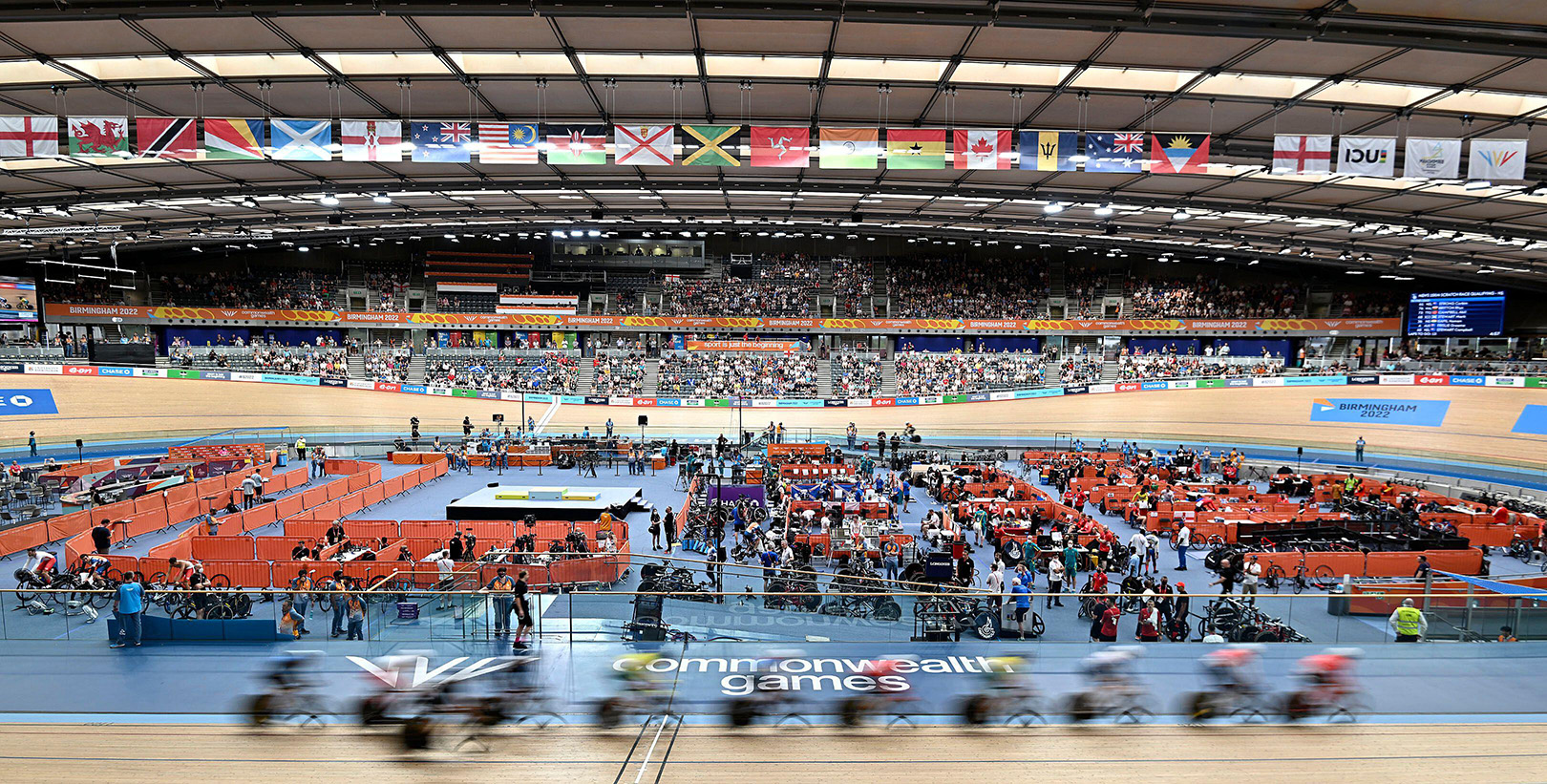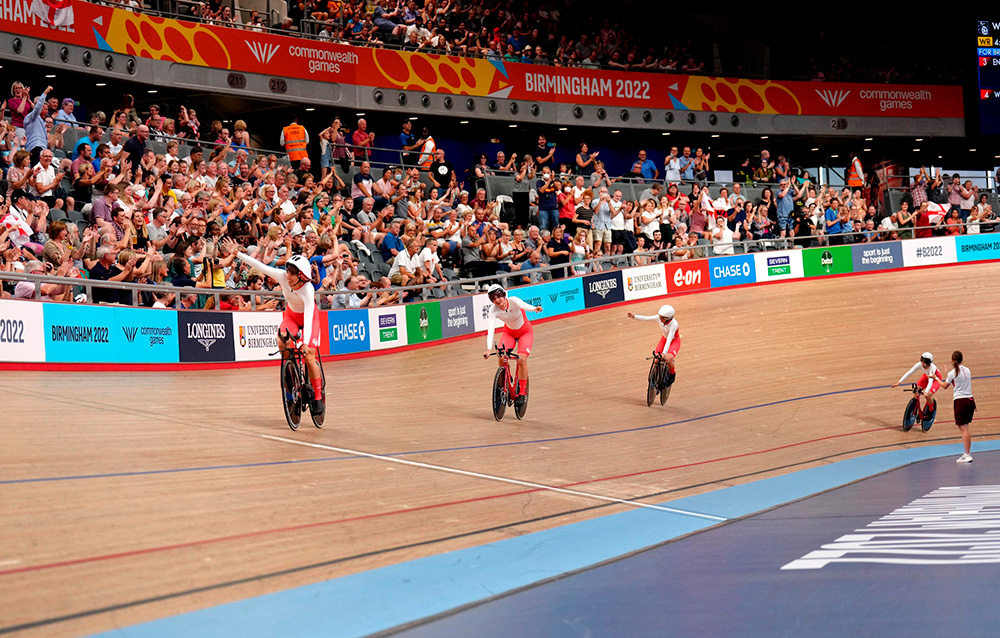#{Title}
#{Copy}
Professional cyclists and para-cyclists might move quicker than the speed of light, but for this year’s Commonwealth Games at Lee Valley VeloPark, BDP’s lighting team has delivered an efficient and effective lighting scheme that keeps pace.
Originally designed by Hopkins Architects for the 2012 Olympics Games, the venue was subsequently repurposed as Lee Valley VeloPark as part of the legacy programme. The original installation was outdated so we advocated the use of new LED luminaires to improve system efficiency, reduce maintenance costs and allow better control options.
Although primarily a world-class velodrome, the building is also used for exhibitions, conferences and private functions. Lighting needed to be flexible to tailor the space for these different functions and an additional feature lighting infrastructure was desired to attract varied revenue streams.

The previous scheme contained 371 luminaires with a total energy load of 368 kW. The luminaires could not be dimmed: changes to the amount of light on the track – needed for different levels of cycling competition – could only be achieved by switching off banks of projectors.
The new lighting scheme comprises 276 luminaires and the overall energy load of the installation equates to 185kW.
The total installed power load of the new installation is half that of the old installation. In addition, the use of DMX and DALI control equipment means that luminaires can be individually switched and dimmed to achieve more precise control of light levels on the track. This means better lighting conditions for riders, spectators and TV cameras, and more efficient use of power. In particular, the DMX control gear in the ‘Altis’ projectors means that these can be used for fast, dramatic lighting as part of event lighting shows before and after competition runs.
The system is readily expandable so that other existing luminaires in the building, or any new luminaires, can be onboarded in future. It also includes an artistic licence module to enable a third-party lighting desk to take full control over the system if required for special events.
In addition to the large sports lighting projectors fixed to the roof, BDP advised on the replacement of 796 downlights in the concourse area, WCs and stairs to spectator seating with LED downlights. The new luminaires used the same cut-out holes as the old downlights to avoid the need for costly and time-consuming work on the ceilings. They also use the same DALI control system. The change in downlights took the total energy load for these luminaires from 20kW down to 10kW, whilst increasing the delivered lumens, improving the spectral quality of light, and eliminating the need for regular lamp changes (which was running at around 20 per month).
Calculations on energy saving helped the client make the business case for replacement. These calculations – accounting for energy, replacement lamps, lamp change labour and controlled hours of operation – showed a significant saving, year on year, which could reach up to £100k after 10 years.
From the addition of dimmable options to state-of-the-art LED lights that cut former energy demands by more than 50%, our designers have ensured that this former Olympic venue continues to deliver high-performance technology for high-performance athletes.
